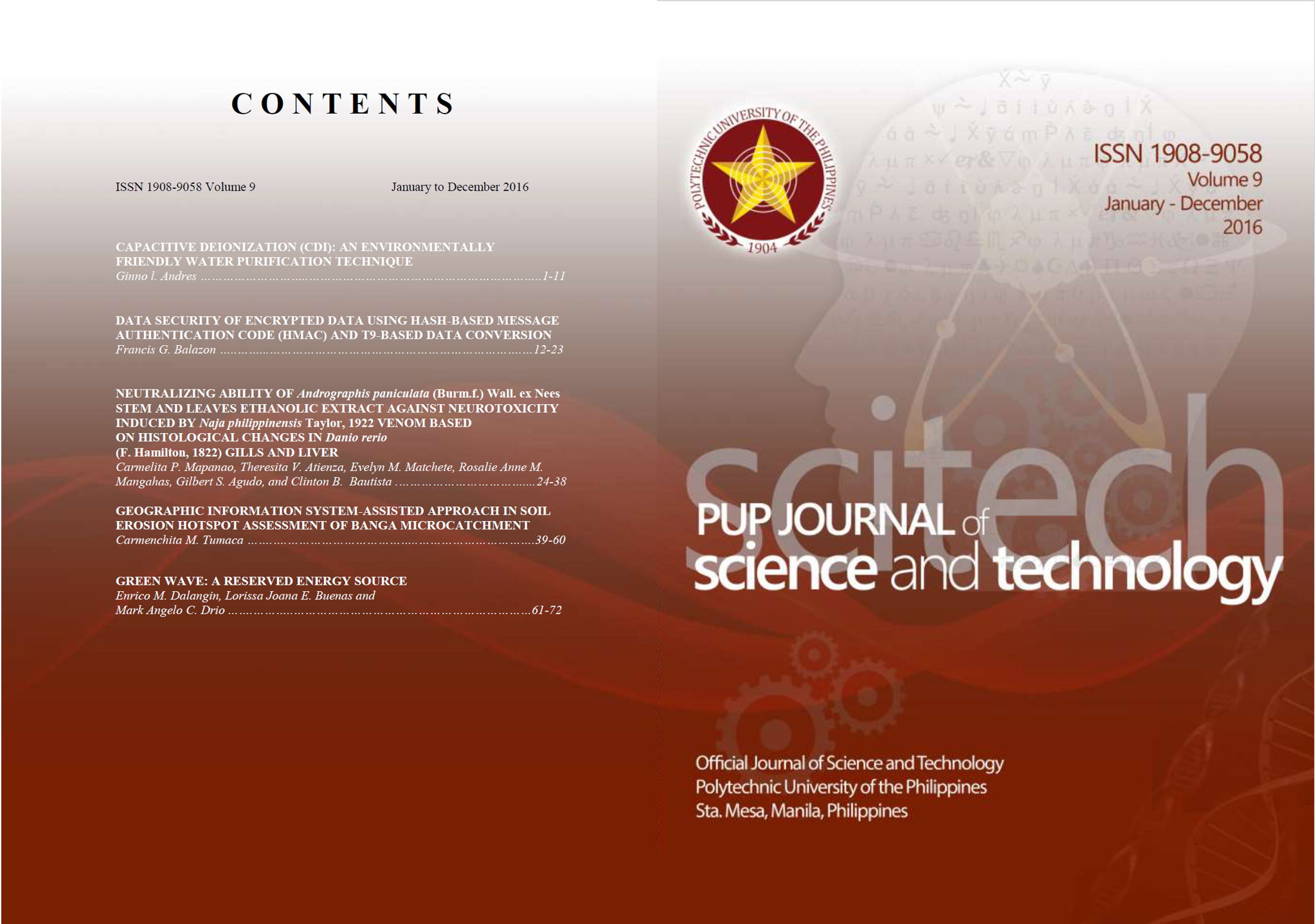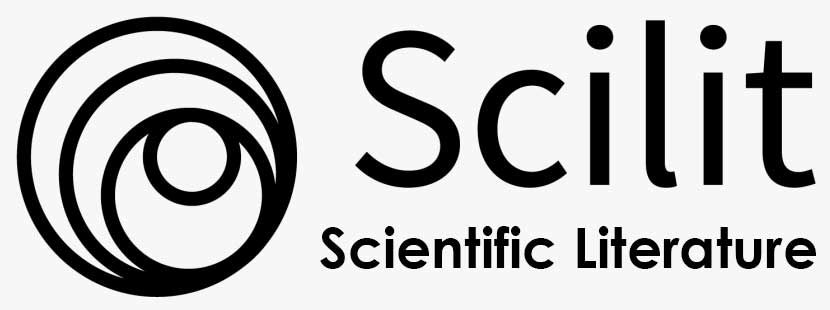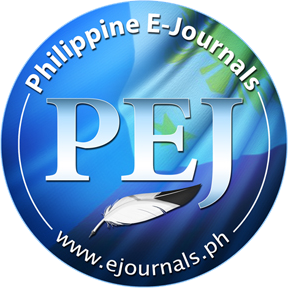Geographic Information System-Assisted Approach in Soil Erosion Hotspot Assessment of Banga Microcatchment
DOI:
https://doi.org/10.70922/5zxqfa14Keywords:
GIS, hotspot, microcatchment, erosion, watershedAbstract
The study aimed to characterize the biophysical environment of the microcatchment, predict soil loss (t/ha/yr.), quantify soil loss for six months, estimate carbon and primary nutrients nitrogen (N), phosphorous (P), potassium (K) loss of major land uses using Universal Soil Loss Equation (USLE) modified through Manifold System Version 8.0 and recommend doable mitigating measures. The Sibalew-Torralba Microcatchment (431.87 ha) is located in Banga, Aklan (122°19'845" and 122°19'449" East Longitude, 11°32"329" and 11°32'586" North Latitude). The two soil types were Sigcay and San Manuel clay loam with compacted surface value of 1.33-147g/cm, a pH of 4.7-6.1; with low N, P, K but medium in soil organic matter (SOM). The microcatchment belonged to Type III climate with mean annual rainfall of 2,183.47 mm. The topography is flat to undulating, rolling, and steep slopes. There are seven major land uses namely agricultural land, mixed vegetation, orchard/agroforestry, coconut-based, grassland, built-up, and water tributaries. Results revealed that the average soil loss at different land utilization types (LUT) was 159.51-1205.32 t/ha/yr. The average actual soil loss range from 19.98-1074.06 kg/ha for six months. Soil erosion hotspots (high-very high soil loss category) was predicted in four LUTs: agricultural land (upland rice, 206.29-618.73 t/ha/yr.; mix vegetation (natural vegetation, fruit trees associated with banana, and corn-vegetables, 75.15, 87.04 and 913.78 t/ha/yr., respectively); coconut-based (coconut-based perennial and mahogany, with underneath of upland rice, 96.37 and 154.77 t/ha/yr.), and built-up (institutional and roads going to provincial roads, 41.69 and 70.42-332.09 t/ha/yr.). Further, carbon loss range from 2.60 to 137.26 kg/ha/6 months; available N loss range from 3.65-172.27 kg/ha/6 months; available P loss range from 74.13-9297.25 kg/ha/mo. while exchangeable K loss range from 8.42-452.39 kg/ha/yr. Thus, application of best crop and soil conservation management practices (natural farming/organic farming and multi-story fruit based agroforestry) is recommended to mitigate soil erosion.
Downloads
References
Aklan Provincial Development And Physical Framework Plan (2008-2013). https://www.scribd.com/.../Retrieved: November 12, 2012.
David, W. D. (1988). Soil and water conservation planning: Policy issues and Recommendation. Journal of Philippine Development Vol. XV no. 1
Kouli, M, Soupios P. & Vallianatos F. (2009). Soil erosion prediction using the Revised Universal Soil Loss Equation (RUSLE) in a GIS framework, Chania, Northwestern Crete, Greece.p.Environmental Geology, 57, 483–497.
Legarda,L. L. (2013). Land Degradation Affects 33M Filipinos; Press Release on August 30, 2013. http://lorenlegarda.com.ph/legarda-land-degradation-affects-33m-filipinos/. Retrieved. Dec.20, 2013
Lanuza, R. L. (2009). GIS-assisted approach in modeling soil erosion at watershed level: Methodology for creation of the main geographic databases and validation, DENR-7 Ecosystems Research Digest 11(1), 1-17.
Mongkolsawat, C., Thirangoon P. & Sriwongsa, S. (1994). "Soil erosion mapping with Universal soil loss Equation and GIS proc," 15th Asian conf.Rem. Sens., Bangalore,C-1-1 to C-1-6
Mutekanga, F. P., Kessler, A., Leber, K. & Saskia Visser, S. (2013).The Use of Stakeholder Analysis in Integrated Watershed Management. Mountain Research and Development, 33(2),122-131. http://dx.doi.org/10.1659/mrd-journal-d-12-00031.1
Namria, 1993. Topographic map of Danao City Quaadrangle, Sheet No. 3722 II, Scale 1:50,000.
Ogawa, S., G.Saito, N.Mino, S.Uchida, N. M.Khan andM. Shafiq, (1997).Estimation of soil erosion using USLE and Landsat TM iPakistan (ACRS 1– 5) Retrieved from GIS development.net October 29, 2014.
Downloads
Published
Issue
Section
License
Copyright (c) 2018 PUP Journal of Science and Technology

This work is licensed under a Creative Commons Attribution-NonCommercial 4.0 International License.







